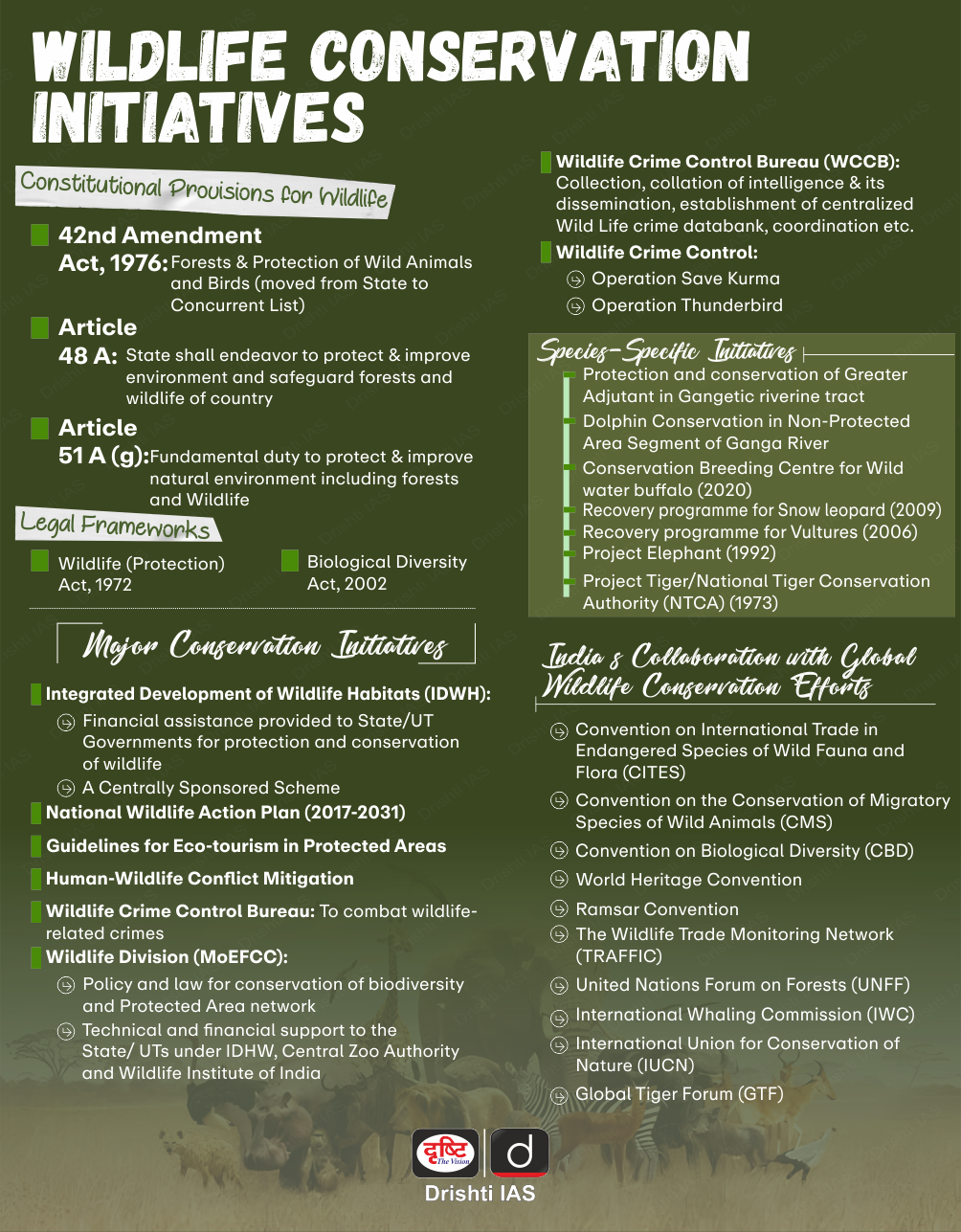Bishnoi, Blackbuck and Chinkara | 22 Oct 2024
Why in News?
Recently, bollywood actor Salman Khan faced backlash from the Bishnoi community for allegedly hunting blackbucks (Antilope cervicapra) in 1998.
What are the Key facts about the Bishnoi community?
- About:
- The Bishnoi, a primarily Hindu sect (historically the British classified them as Muslim), mainly reside in western Rajasthan's Thar Desert.
- The Bishnoi community, founded on 29 principles by Guru Jambheshwarji, who was born in 1451 CE, protects wildlife, especially blackbucks and chinkaras.
- Eight of these principles emphasise compassion towards living beings and protecting biodiversity.
- In addition to their 29 principles, Guru Jambhoji wrote a set of 120 statements or shabdas.
- The Bishnoi's eco-conscious beliefs stem from their historical sacrifices for nature, including the Khejarli massacre in 1730.
- In the 1730 Khejarli massacre, 363 Bishnoi along with Amrita Devi sacrificed their lives protecting Khejri trees from Maharaja Abhay Singh's (Maharaja of Jodhpur) soldiers. The community has also defended Thar's wildlife from hunters and poachers.
- Conservation Efforts:
- Wildlife is concentrated around Bishnoi villages in Rajasthan's desert region, where the community actively protects flora and fauna.
- The Bishnoi give special protection to Blackbuck, Chinkara, Great Indian Bustard, and the Khejri tree.
What are Blackbucks?
- About:
- The Blackbuck (Antilope cervicapra), or the Indian Antelope, is a species of antelope native to India and Nepal.
- It is widespread in Rajasthan, Gujarat, Madhya Pradesh, Tamil Nadu, Odisha, and other areas throughout peninsular India.
- It is considered as the epitome of grassland.
- The blackbuck is a diurnal antelope (active mainly during the day).
- Recognition: It has been declared as the State Animal of Punjab, Haryana, and Andhra Pradesh.
- Cultural Importance: It is a symbol of purity for Hinduism as its skin and horns are regarded as sacred objects. For Buddhism, it is a symbol of good luck.
- Protection Status:
- Wildlife Protection Act 1972: Schedule I
- IUCN Status: Least Concern
- CITES: Appendix III
- Threat:
- Habitat Fragmentation, Deforestation, Natural Calamities, Illegal Hunting.
- Related Protected Areas:
- Velavadar Blackbuck Sanctuary - Gujarat
- Point Calimere Wildlife Sanctuary - Tamil Nadu
- Tal Chhapar Sanctuary- Rajasthan
What are Chinkaras?
- The Chinkara, or Indian Gazelle (Gazella bennettii), is an elegant antelope species native to India, Pakistan, and Iran.
- Related Protected Areas: Melghat Tiger Reserve (Maharashtra).
- Protection Status:
- Wildlife Protection Act 1972: Schedule I
- IUCN Status: Least Concern
- CITES: Appendix III
UPSC Civil Services Examination, Previous Year Questions (PYQs)
Prelims:
Q1. Which one of the following protected areas is well-known for the conservation of a sub-species of the Indian swamp deer (Barasingha) that thrives well on hard ground and is exclusively graminivorous? (2020)
(a) Kanha National Park
(b) Manas National Park
(c) Mudumalai Wildlife Sanctuary
(d) Tal Chhapar Wildlife Sanctuary
Ans: (a)

